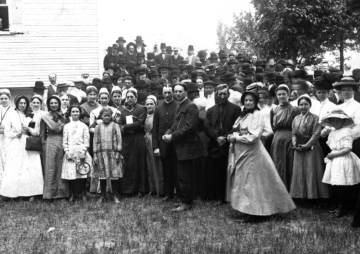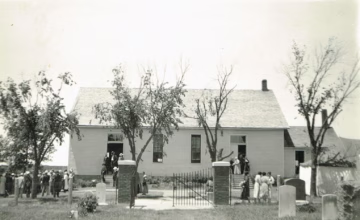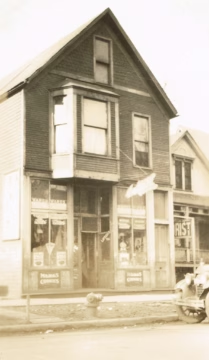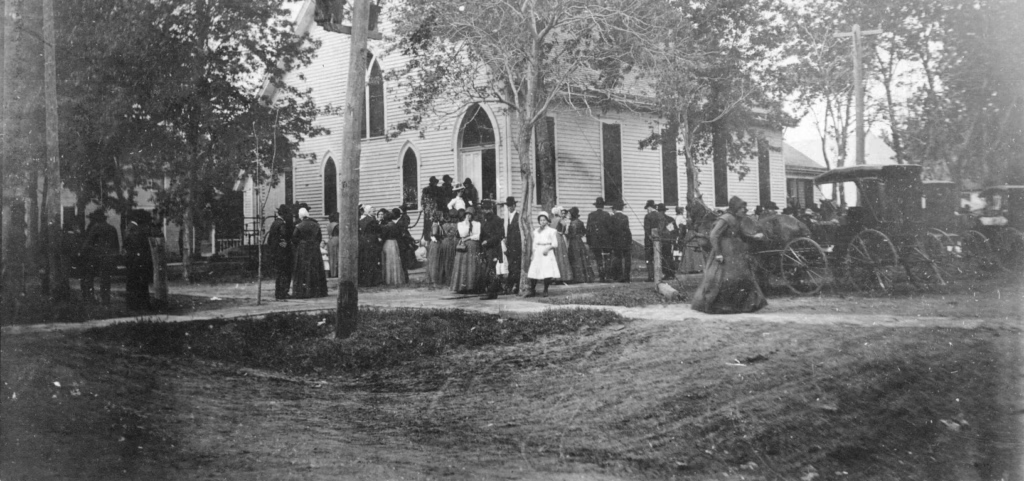
The Brethren in Christ denomination began sometime between 1775 and 1788, near the present town of Marietta, Pennsylvania. Impacted deeply by the revivals of the Great Awakening of the 18th century, our founding mothers and fathers brought strong Anabaptist and Pietist backgrounds with them, emphasizing a personal, heartfelt conversion experience.
The earliest Brethren in Christ called themselves “the Brethren.” Outsiders often referred to them as “River Brethren” since they lived mostly along the Susquehanna River. By 1788 a group of the Brethren immigrated to Canada where they became known as the “Tunkers,” a reference to their practice of baptism (from the German word meaning “to dip”). Other Brethren in Christ moved westward from Pennsylvania, settling in Ohio, Indiana, Michigan, Iowa, Kansas, Oklahoma, and California.
The early Brethren expressed discipleship in practical ways. They avoided “worldly” activities, like engaging in politics or playing cards. Desiring to separate themselves from the world, they dressed simply and avoided wearing jewelry, bright colors, or frills.
The early Brethren in Christ took their name seriously; they believed they were a brotherhood in Christ and practiced as such. To symbolize their concept of brotherhood, members held worship services in their homes for much of the first 100 years of BIC history. And even when the Brethren began to construct buildings referred to as “meetinghouses,” they kept them simple with pews surrounding the interior on three sides and an un-elevated pulpit. Thus, the Brethren met in common around the Word of God. Very early in our Church’s history, members began to move and take their beliefs with them.

Around the time of the United States’ Civil War, the Brethren decided to record themselves under the present name, “Brethren in Christ.” Then, in 1879, the North American Church (U.S. and Canada) organized into a general conference, providing overall guidance to regional and local churches and paving the way for systematic evangelism.
In 1894, the BIC founded their first home mission in Chicago, and, four years later, established their first foreign missions work in the African nation of Rhodesia (now Zimbabwe).
Today, Brethren in Christ churches can be found all across the United States and Canada, and in more than 23 countries around the world.
Tracing Our Theological Roots
The Brethren in Christ trace a rich blend of theological traditions that make us who we are today. Specifically, our churches’ preaching and teaching is shaped by four emphases within the wider Christian community: Anabaptism, Pietism, Wesleyanism, and Evangelicalism.
Anabaptism
Our theological roots reach back to the Protestant Reformation, where reformers, known as Anabaptists, stressed the importance of a personal responsibility toward one’s baptism (also known as believer’s baptism). They believed in the importance of discipleship, obedience, the separation of Church and state, the peace practice of non-resistance, and the necessity of community. This Anabaptist strain within our Church’s “theological DNA” shows itself most particularly in our emphases on the community of faith, serving compassionately, living simply, and pursuing peace.
Pietism

We Brethren in Christ draw a portion of our identity from certain German believers who, in the 17th century, rejected the overly intellectualized expression of the Christian faith that had become popular within certain segments of the Church. The Pietists stressed the importance of genuine conversion and a warm, personal experience of renewed life in Christ. This awakening experience swept through Europe and on to America. For Brethren in Christ, the Christian faith is a relationship with God that is to be enjoyed with the heart, even as it is affirmed with the head.
Wesleyanism
We trace part of our heritage to the teachings of 18th century British scholar and preacher John Wesley. The Wesleyan movement in America — also known as the Holiness movement — emphasized conversion as a conscious acceptance of God, as well as the empowerment of the Holy Spirit and daily growth in holiness. Today, we value the free gift of salvation in Christ Jesus and the Holy Spirit’s transforming power as we excitedly share the gospel with all.
Evangelicalism
Around 1950, struggling with decreasing church membership and legalistic religious practices, the Brethren in Christ family was drawn to a new wave of Evangelicalism sweeping the nation — one embracing faith and culture. Leaders of the new movement, such as Billy Graham, promoted the core tenets of Evangelicalism: the saving work of Jesus Christ, believing Scripture, and the Church’s mission to reach a lost world for Christ. Yet the leaders of Evangelicalism’s latest movement wanted to break from its fundamentalist ties. Through the influence of this “mainstream” Evangelicalism, the Brethren in Christ’s focus shifted from what separated us from culture — such as dress and lifestyle — to how we could better engage culture with the transformative message of the gospel.
Watch: “What is an Evangelical?”
For more than 200 years, the Brethren in Christ has expressed an openness to renewal shaped by these various movements and the ongoing work of the Holy Spirit. At its core, the blending of these theological streams can be distilled to an authentic, heartfelt desire to follow Jesus. Whatever period in the life of our Church, we as Brethren in Christ have desired to follow Jesus through the power of the Holy Spirit.
